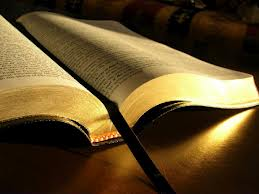Bible English Translation
Bible, English translations
The gospel of John was translated into Anglo-Saxon by the Venerable Bede (673–735 CE). An English translation of the entire Latin Bible was produced in 1380 under the influence of John Wyclif, called ‘the Morning Star of the Reformation’ but it was not well received by the Church authorities. William Tyndale, in exile in Cologne, completed a translation of the Greek NT in 1525, in which Paul addresses the elders of Ephesus (Acts 20: 20) as the ‘congregation of the Lord’ rather than ‘Church’. Miles Coverdale provided a revision (1539) which was called the ‘Great Bible’ (its psalter was incorporated into the Anglican Book of Common Prayer and is therefore still in use) but in 1560 exiles in Geneva, who had fled during the reign of Mary, published another Bible, with verse numbers, which became popular with the laity (including Shakespeare) but not with the bishops, for it too used ‘congregation’ in place of Church. So they offered a revision of the Great Bible, known as the Bishops' Bible, read in the Church of England for forty-three years from 1568.
Roman Catholics also decided to make a translation; it was taken from the Latin and was the work of exiles at Douai and Reims in 1582 (NT) and 1609 (OT). Although wooden and literal it remained (though in a revision by Bishop Challoner in 1749) the official Roman Catholic translation in Great Britain until Mgr. Ronald Knox published a new translation (from the Latin) in 1955, which was elegant and clear but too different to win much approval.
What is known as the Authorized Version or the King James Version (1611) was a revision of the Geneva Bible by three companies of scholars, divided into six panels. Their work became the standard translation for centuries after and part of English thought and speech; but by the 19th cent. it came to be regarded as unsatisfactory by reason of much new knowledge of Greek MSS and ancient versions in other languages. Accordingly a process of revision was set in motion and a Revised Version of the NT, based on the Greek text of Westcott and Hort, was published in 1881, followed by the OT in 1885 and the Apocrypha in 1895. There was consultation with American scholars, but a joint revision was not published. Instead the American revision (1901) was called the Standard Version and it had the English variations in an appendix—as the English RV also had the American variations in an appendix. These versions remained the usual text for students until the Revised Standard Version was published in the USA in 1946, and repeatedly, culminating in the New RSV of 1989 in which the translators gave attention to paragraph structure and punctuation, the avoidance of archaisms, and to clarity and euphony. A popular modern translation of the Bible was that of the Scottish divine James Moffat, in 1935, and to supplement it a series of commentaries was published.
A completely new translation was available in Great Britain in 1961 called the New English Bible and this was revised to be more suitable for public reading and published in 1989 as the REB.
Roman Catholics (and others) have the Jerusalem Bible, which contains exegetical notes translated from the French of the Jerusalem Dominicans in their Bible published in 1956. The English JB, and the New JB, are translations from the original languages, not the French, and one characteristic is the use of the Hebrew YAHWEH in the OT for the name of God rather than the LORD. The New American Bible, translated from the original languages, was published for Roman Catholics in 1970.
Both NRSV and REB use inclusivist language, so that where formerly a masculine word was used when it applied to people of both genders, men and women, now words such as ‘community’ are preferred to ‘brethren’ (Eph. 6: 23). NRSV and REB are used by Christians of most denominations except that in 1994 the Vatican forbade use of NRSV in Catholic public worship on account of inclusivist language.
Created at 2016-11-29 03:42
Back to posts
This post has no comments - be the first one!
UNDER MAINTENANCE
